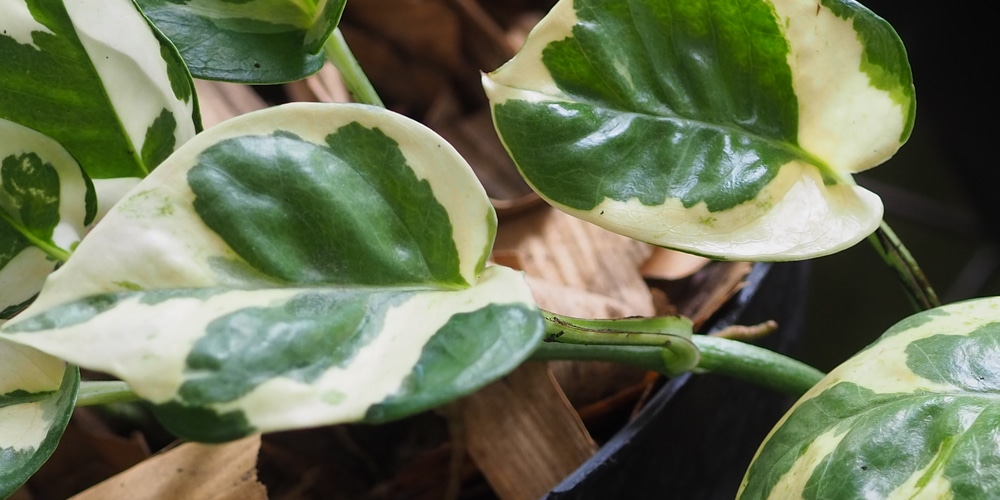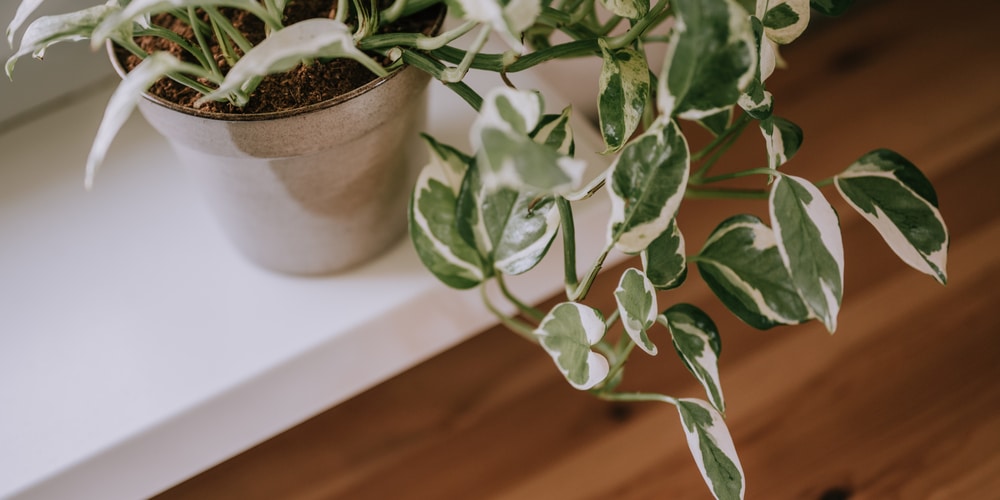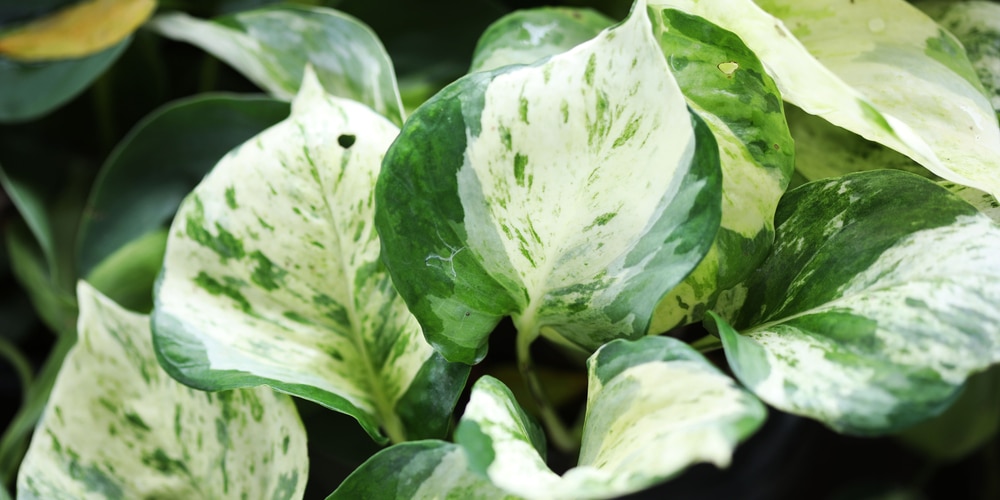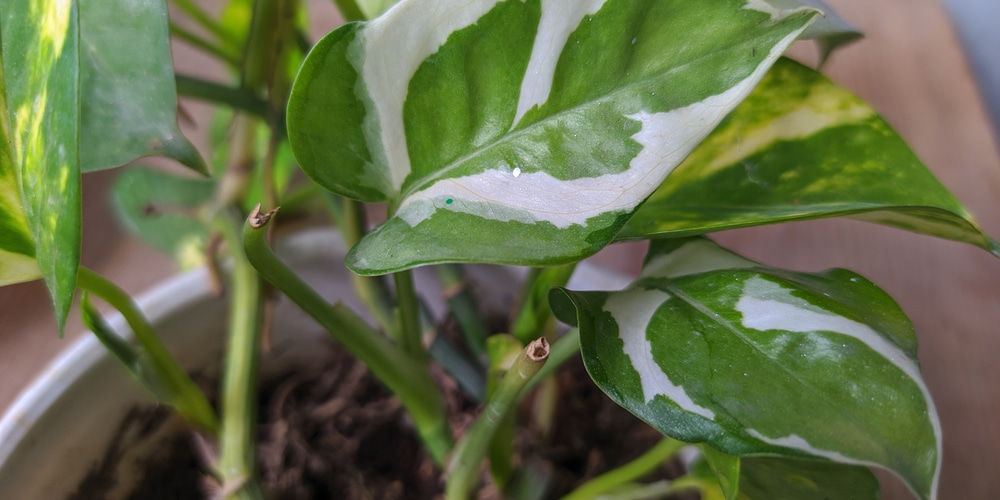Pothos plants come in many varieties and have recently become one of the most commonly grown houseplants globally. These tropical plants are very affordable and easy to care for.
Two of the most popular types of Pothos varieties are the Pothos n joy plant and the Pearls and Jade Pothos. These two plants look very similar, but there are some slight differences between the two.


Let’s compare Pothos n Joy vs. Pearls and Jade Pothos to help determine which is the best plant for you.
What are Pothos Plants Anyway?

There are many different types of Pothos plants available, and they all belong to the Araceae family. These plants originate from subtropical areas in Asia and are also found in Australia, New Guinea, and other Indian and Pacific islands.
Pothos species have dark green leaves with various other hues depending on the species. Some have yellow, cream, or white variegated leaves. Pothos plants help to create a tropical look to your home and are also commonly grown in office environments.
They are natural air purifiers that are relatively hardy. Two types of pothos are the most popular Pothos n Joy vs. Pearls and Jade Pothos.
Pothos n Joy vs. Pearls and Jade Pothos: Similarities

Both varieties of Pothos have a tropical look; they have medium to large variegated leaves. These plants have leaves in various shades and are popular with plant enthusiasts due to their dark green leaves with cream marbling.
Soil
The Joy n Pothos and the Jade Pothos have very similar needs when it comes to soil. They both require light, well-drained soil, and drainage is more important than soil type. You can use a standard house plant soil and mix in some peat moss to help with moisture retention and nutrients.
Temperature
Both the Pothos n Joy and the pearls and jade pothos are relatively resilient to temperature. As these plants are tropical, they can suffer if it gets too cold and don’t like to be left in draughts. The best temperature for these two plants is about 50 degrees Fahrenheit.
Pothos n Joy vs. Pearls and Jade Pothos: Differences

As you can see, the Pothos n Joy vs. Pearls and Jade Pothos are relatively similar, but they do have slight differences when it comes to their care. The main differences are to do with watering and lighting requirements.
Watering
The Pothos n joy has very specific watering requirements and will suffer if it’s either over or under watered. This plant thrives when the soil is kept moist. However, it shouldn’t constantly be watering, or the earth may become waterlogged. It’s best to leave the topsoil to dry out before watering again.
The Pearls and Jade pothos is more drought-resistant, and if you forget the water, your plant will survive for weeks or even months. Underwatering can cause stunted growth, so it’s a good idea to develop an effective watering strategy. The Pearls and Jade pothos are affected by overwatering and can suffer from root rot if the earth becomes waterlogged.
Lighting
The Pothos n Joy is very versatile when it comes to lighting. These plants can survive in various conditions but prefers bright indirect sunlight. In low light conditions, your plant’s color may begin to fade, and its leaves may become darker green rather than beautiful mottled colors.
The Pearls and Jade Pothos, on the other hand, is less resilient and prefer lower levels of light and partial shade. Too much light will lead to your plant’s colors fading, and if left in bright sunlight, the foliage may burn. If the Pearls and Jade Pothos is left in bright sunlight, it will begin to lose its marbling qualities.
Conclusion
It can be hard to know whether to grow a Pothos n Joy vs. Pearls and Jade Pothos as they both look so similar. All pothos species make attractive houseplants and are relatively easy to care for. You just need to take into consideration the slight differences in the care needs of these two plants when making your choice. Both these plants are visually stunning and are relatively hardy without needing constant care.